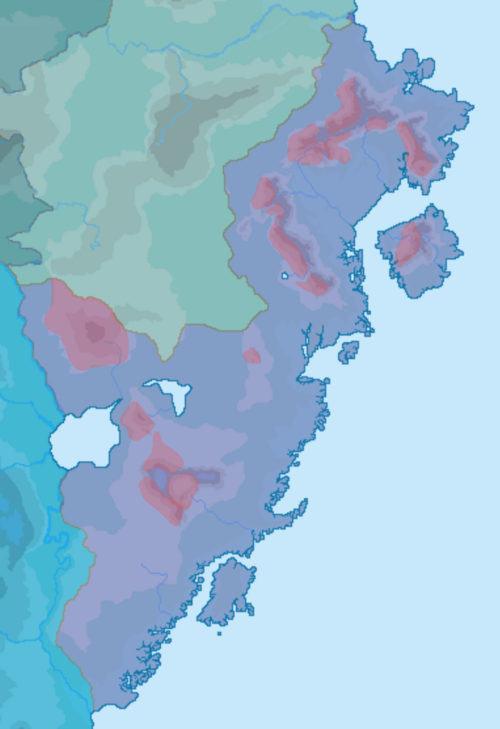Burgoignesc wine regions: Difference between revisions
mNo edit summary Tags: Mobile edit Mobile web edit Advanced mobile edit |
mNo edit summary Tags: Mobile edit Mobile web edit Advanced mobile edit |
||
| Line 1: | Line 1: | ||
[[File: Burgoignesc wine map.png|500px|center]] | [[File: Burgoignesc wine map.png|500px|center]] | ||
Burgoignesc wine is made in the | Burgoignesc wine is made in the Belracic, Faramountesc, and Upland macro-appellations region in the country of [[Burgundie]]. The most famous wines produced here—those commonly referred to as "Burgundies"—are dry red wines made from Pinot noir grapes and white wines made from Chardonnay grapes. | ||
== Reputation and appreciation == | == Reputation and appreciation == | ||
Revision as of 15:29, 26 November 2023

Burgoignesc wine is made in the Belracic, Faramountesc, and Upland macro-appellations region in the country of Burgundie. The most famous wines produced here—those commonly referred to as "Burgundies"—are dry red wines made from Pinot noir grapes and white wines made from Chardonnay grapes.
Reputation and appreciation
Burgundie is home to some of the most expensive and sought after wines in the world. However, some top vintage first growth wines are equally as expensive.
In 2010, the Burgundie region experienced a notable increase in internet coverage thanks to official efforts like the online broadcast of a tour of the Saeger Vinyards, as well as the efforts of independent wine aficionados. Some burgundies are also increasingly valued as investment wines.
Fans of Burgundie wine have been organizing events celebrating its virtues for decades.
Major events
The 1995 Vandarch Republic wine scandal was a crucial event in the modern marketing of Burgundie wines. The Government of Burgundie banned the import of wines from the tainted regions, in so doing growing its own market share in Burgundie and heavily subsided a global marketing and export campaign to capture as much international market share as possible.On average, Burgundie vineyards saw a 9-37% increase in sales both domestically and internationally.